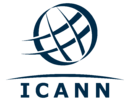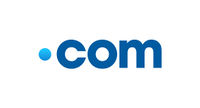Main Page
ICANNWiki Info Sheet
Many thanks to our sponsors for all of their continued support!
Vertical Integration
Vertical Integration (VI, or Cross Ownership) is a business structure in which the various functions of the Registry Operator and the Registrar are handled by a single body. This single body is either owned or is under supervision of the same company that supports the specific gTLD; alternatively, the controlling body can be a partnered company that is given the contract of the gTLD. The Registry Operator is not required to provide equivalent access and non-discriminatory access to non-affiliated registrars to sell names under its gTLD. Related policies are developed by ICANN's Vertical Integration Working Group (VIWG). Vertical Integration was banned by ICANN for much of its history, requiring instead Vertical Separation; but in November 2010, the ICANN Board changed its position on Vertical Separation and moved to implement Vertical Integration to foster greater innovation, competition, and presumably provide the consumer with differentiated and lower-priced options.
(Read the full article...)
.com
.com is one of the first TLDs to be used on the Internet's Domain Name System; it was originally intended for commercial purposes, though there are no current restrictions limiting it to commercial entities. It was introduced in 1985 by IANA, which is responsible for the overall coordination and management of the DNS; the organization was led by Jon Postel at the time. On January 28, 1986, the entities overseeing the DNS met and restructured its makeup to correspond to 8 TLDs, including .com, the others are: .gov (government), .edu (American higher education), .mil (American military), .org (organization), .int (international, specifically NATO relations), .net (sites related to the Internet itself), and .bitnet (computers on the BITNET network).
Explore the history of the world's most popular TLD with this article.
(Read the full article...)
- gTLD Auctions
- Closed gTLDs
- Sort All TLDs by Priority
- 了解ICANN 和 新gTLDs计划
(Chinese micro-site)









